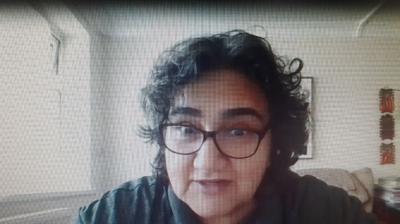A remarkable progress in India’s defence and space production
Dr Bhamre also informed that to involve private sector in defence R&D, projects have been undertaken under the “Make in India” category.
On February 15, 2017 Indian Space Research Organisation (Isro)’s Polar Satellite Launch Vehicle (PSLV-C37) successfully launched the 714 kg Cartosat-2 series satellite along with 103 co-passenger satellites from Satish Dhawan Space Centre, Sriharikota. In this 38th consecutively successful mission of the PSLV, the total weight of all the 104 satellites carried on-board PSLV-C37 was 1,378 kg. After a flight of 16 minutes 48 seconds, the satellites achieved a polar Sun-synchronous orbit of 506 km inclined at an angle of 97.46 degree to the equator (very close to the intended orbit) and in the succeeding 12 minutes, all the 104 satellites successfully separated from the PSLV fourth stage in a predetermined sequence beginning with Cartosat-2 series satellite, followed by INS-1 and INS-2. The total number of Indian satellites launched by PSLV now stands at 46. After separation, the two solar arrays of Cartosat-2 series satellite were deployed automatically and ISRO Telemetry, Tracking and Command Network (ISTRAC) at Bengaluru took over the control of the satellite. In the coming days, the satellite will be brought to its final operational configuration following which it will begin to provide remote sensing services using its panchromatic (black and white) and multi-spectral (colour) cameras.
Of the 103 co-passenger satellites carried by PSLV-C37, two — ISRO Nano Satellites, INS-1 weighing 8.4 kg and INS-2 weighing 9.7 kg — are India’s technology demonstration satellites and 101 were international customer satellites from the US (96), The Netherlands (1), Switzerland (1), Israel (1), Kazakhstan (1) and the UAE (1). With this successful launch, the total number of foreign customer satellites launched by India’s workhorse launch vehicle PSLV has reached 180.
On February 14, the first indigenous Airborne Early Warning and Control System (AEW&C) in inversion of control (IOC) configuration, having undergone all weather and environmental trials and accepted by the Indian Air Force (IAF), was handed over to it during Aero India 2017 at Yelahanka airbase, Bengaluru, by chairman, Defence Research and Development Organisation (DRDO) and secretary department of defence (R&D), Dr S. Christopher.
Considered to be a game changer in air warfare, the AEW&C is a system with state-of-the art Active Electronically Scanned Radar, Secondary Surveillance Radar, Electronic and Communication Counter Measures, Line of Sight (LOS) and beyond LOS data link, voice communication system and self-protection suite, built on an Emb-145 platform, having an air to air refuelling capability to enhance surveillance time. Complex tactical software has been developed for fusion of information from the sensors, to provide the air situation picture along with intelligence to handle identification/classification threat assessment. Battle management functions are built in house to work as a network centric system of the Integrated Air Command & Control System (IACCS) node. The AEW&C system has the IAF for induction.
On February 11, 2017 India successfully conducted a test wherein an incoming ballistic missile target was intercepted by an exo-atmospheric interceptor missile off the Bay of Bengal. With this commendable scientific achievement, India has crossed an important milestone in building its overall capability towards enhanced security against incoming ballistic missile threats. It has entered an exclusive club of four nations with developing capabilities to secure its skies and cities against hostile threats. Prime Minister Narendra Modi and defence minister Manohar Parrikar lauded the efforts of DRDO and all the scientists involved for their dedicated efforts in this significant achievement.
Recently, minister of state for defence Dr Subhash Bhamre informed in Parliament that in the last two financial years and current year, 90 contracts involving a value of Rs 83,344.31 crores were signed with Indian vendors and 51 contracts involving a value of Rs 1,16,667.34 crores were signed with foreign vendors for capital procurement of defence equipment. The Defence Procurement Procedure 2016 reflects the commitment to promote indigenisation and self-reliance in the defence sector by harnessing the capabilities of the public and private sector.
A contract between Nova Integrated Systems Ltd and Indian Navy for procurement of Surface Surveillance Radars (SSR) signed on February 17, 2017 is the first under the Buy and Make (Indian) category, in line with the government’s “Make in India” initiative. Nova Integrated Systems Ltd, a fully owned subsidiary of Tata Advanced System Ltd, will indigenously manufacture these state-of-the-art radars in collaboration with Terma, Denmark. This contract marks the entry of Indian private industry in production of hi-tech sensors for the Indian Navy. Procurement of SSR is a part of Indian Navy’s plan for modernisation of its fleets, and these radars will also be installed onboard the ships under construction. The government’s drive to modernise the armed forces and build an Indian defence industrial base with participation of private industry gets a major boost with the signing of this contract.
Some of the major weapon platforms indigenously designed and developed by DRDO, that have been successfully inducted into the services inter alia include advanced light helicopters, light combat aircraft, Akash missile systems, multi barrel rocket system — Pinaka, Arjun tanks, Sonars, etc.
Dr Bhamre also informed that to involve private sector in defence R&D, projects have been undertaken under the “Make in India” category. The government also launched the Technology Development Fund to involve industry, particularly SMEs in defence sector. According highest preference to the “Buy Indian” category of acquisition (indigenously designed, developed and manufactured) and revising the “Make” procedure in the Defence Procurement Procedure 2016, are moves expected to catalyse investment into defence research, development and innovation. Some of the new special innovative projects covering a wide variety of technology domains from aeronautics to missiles and naval systems undertaken by DRDO during last three years are:
- Pralay Missile
- Rudra M-II Air to Surface Missile
- Supersonic Missile Assisted Release of Torpedo (Smart)
- Ku-band Active Radar Seeker
- Stealth Wing Flying Testbed (SWiFT)
- AESA Based Integrated Sensor Suite (ABISS)
- EM Gun Powered by a Capacitor Bank
- Multi-Agent Robotics System (MARS)
- Ku-band TWTA for Aerospace Application
- Submarine Periscope
- Air Independent Propulsion System for Submarine
- AWACS (India), Radar USHAS
Details of expenditure made by the department of defence R&D during the last three years and current year, including the above mentioned projects are: Rs 10,868.88 crores in 2013-14, Rs 13,257.98 crores in 2014-15, Rs 13,277.27 crores in 2015-16 and Rs 13,593.78 crores in 2016-17.
Changing the policy on blacklisting of firms, the ministry of defence had debarred six firms, including their allied and subsidiary firms from further business dealings for a period of 10 years since April 11, 2012. Further, business dealings have been suspended/put on hold for 13 firms. For another four firms, orders were issued restricting procurement from them to cases where procurements are justified and necessary for operational urgency, national security and non-availability of other alternatives. Guidelines for penalties in business dealings with entities have been promulgated since November 21, 2016 to ensure probity, transparency, propriety and compliance in the defence procurement process and are also aimed at ensuring fairness, impartiality, rigour and correctness in dealings with entities, keeping in view the overall security interests of the country.


















